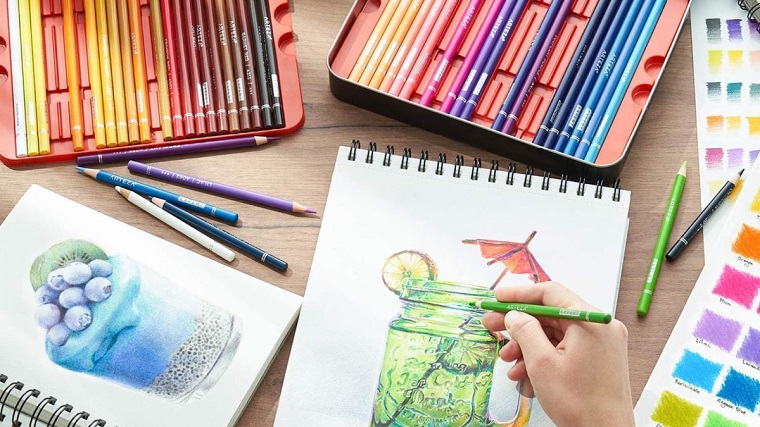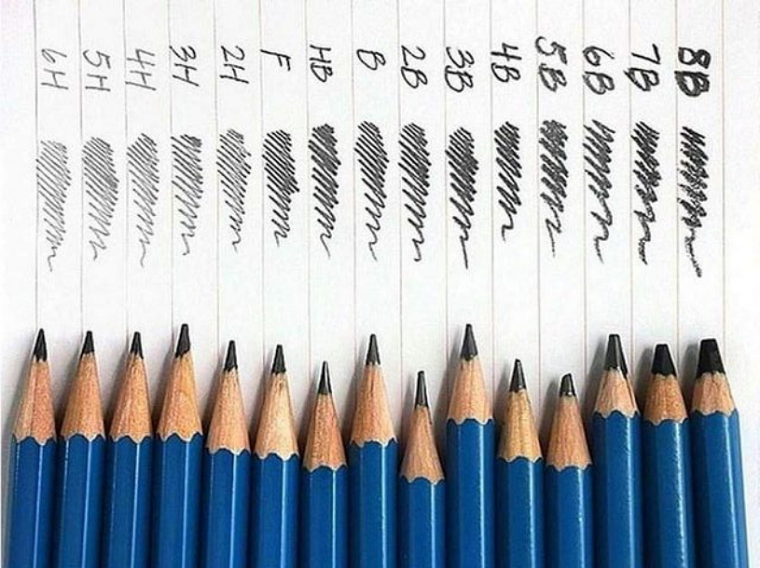Developing your artistic skills can be a very fun but also challenging experience. It doesn’t matter whether you’re a beginner or have been in this art world for some time, discovering and getting a new art medium is always a thrill. If you’re about to purchase art pencils and are new to this technique, there are a few basic things you should know about the types, materials and what type of marking art pencils leave. Without further ado, here is what you should know about this topic.

Source: mymodernmet.com
Types of Pencils
Graphite Pencils
Often called “lead pencils” graphite pencils were first discovered in Cumbria, England, during the 16th century. Back in the day people thought it was lead, and the name has remained in use ever since. In the 18th century, manufacturers started making pencils by cutting graphite into sticks encased in wooden sleeves.
Soon pencil manufacturers started mixing graphite with clay, which controlled the hardness and softness of pencils. The ratio of softer to the harder graphite was easily done with the clay. A hard pencil has more clay filler, which gives a tightly packed graphite that leaves a light mark on the paper. A soft pencil has more graphite and less clay filler, leaving a darker mark on the paper.
When you purchase these pencils you’ll see a marking such as HB, H or B. H stands for ‘hard’ while B stands for ‘black’. HB is in the middle. 9B is extremely soft, 9H is very hard and leaves a light grey mark.
Charcoal Pencils
Charcoal pencils are These pencils are used as a drawing medium for a long time (especially before graphite was discovered). Archeologists has discovered charcoal cave drawings dating back to 23,000 B.C. Charcoal is also carbon-based material, it’s distinctive and serve various purposes for artists. Charcoal is more often used for dramatic effects in sketches. Its molecular structure makes charcoal crumble easily and leaving marks behind. It is soft and flaky, which is why artists use charcoal to make layers and expressive effects in their drawings. You can create dark lines derived by applying pressure or use light movements to make shadowing.

Source: creativebloq.com
Coloured Pencils
You will probably purchase pencils in colour as well because this medium adds more variety, especially if you’re into abstract art. These pencils don’t contain graphite or charcoal, but instead, their core has a colour pigment mixed with water and bonding agents in wax or oil-based material. Even ancient Greeks used wax-based drawing utensils, but it was not until the early 20th century that coloured pencils began available for wide use.
The core of these pencils is wax-based and can be both hard and soft. The pigment gives great coverage, even though wax-based pencils cores are easily breakable compared to oil-based coloured pencils. Oil-based coloured pencils are harder than wax-based pencils; their pigment holds together more easily in a vegetable oil base, so this type of pencil gives longer-lasting results.
Mechanical Pencils
These are usually associated with drafting or writing, but you can easily use them for artwork. Their advantage is that they don’t need sharpening. Once the lead core is finished, just insert a new one. You can easily draw thick and think lines with mechanical pencils. The leads come in a range of sizes, and the diameters of the drawing points are measured in millimetres. A 0.3-millimetre lead gives fine lines, while a 0.7-millimetre lead draws thick lines.

Source: creativerox.com
What to Consider
Hardness
The pencil’s hardness is rated on an alphanumeric scale where the letters and numbers indicate hard and soft pencils. A soft pencil leaves a dark, black mark, while a hard pencil draws a light, grey mark. The popular and commonly used No. 2 writing pencils are HB because their lead hardness is in the middle of the scale.
The Quality of the Components
When buying your art pencils, be sure to get top-quality products. Look for pencils that advertise a blend of high-quality graphite and clay. When it comes to charcoal pencils and sticks, you should get drawing utensils made by heating willow or vines in a kiln or high-heat chamber. Willow charcoal gives rich, black marking, while vine charcoal gives excellent grey lines and shading.
Mechanical pencils come in a variety of materials. The quality of this pencil depends on the mechanism that drives the lead and the material, shape, and design of the barrel. The lead should easily proceed with the click of a button or with a simple twisting motion.
Durability
This is an important thing to consider. Durable points require less sharpening, and the less you sharpen the pencil the longer it will last. You will also save time to do this, without having to re-sharpen the pencil every few minutes. The point of soft pencils wears down faster than the point of a hard one. As an artist, you will need both hard, soft and in-between hard pencils.














